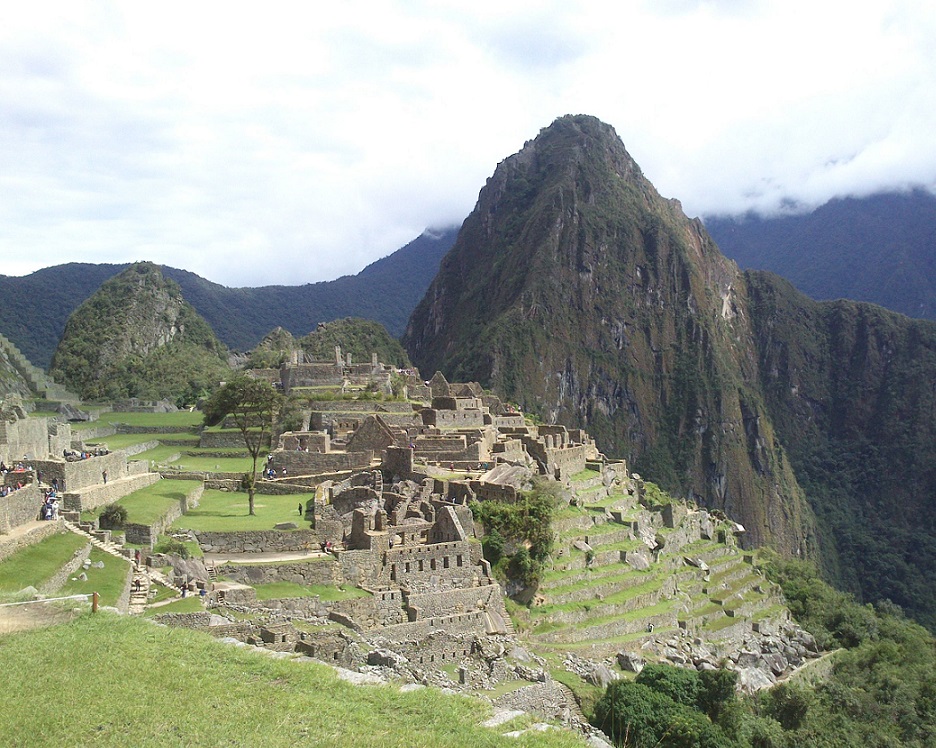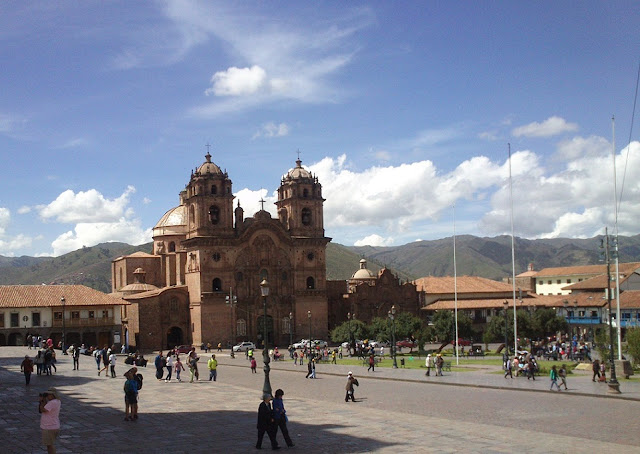🌏 Index of contents
 |
| Machu Picchu (Perú) |
1. Visit to Valparaíso and Viña del Mar.
We start this tour from Santiago de Chile and our final destination will be the Peruvian capital of Lima, crossing the Atacama desert, the Bolivian highland and visiting the ruins of Machu Picchu.
This route is long, so you can do it all by road or if you prefer some section by plane. But in Latin America there are no cheap low cost flights, so travel costs vary. It is advisable to do it all by road and spend more time on it.
In any case, on the map at the end you have marked some of the airports that remain en route in case you get tired of so many hours in a car or bus. But if you manage to make the entire route you will be able to see even more incredible places and have more contact with the population of these territories that will undoubtedly surprise you with their friendly and welcoming character.
Before diving fully into the desert, it is highly recommended to head from Santiago to the Pacific Ocean enjoying the landscape of vineyards typical of central Chile.
So you can get to know the interesting city of Valparaíso, considered since ancient times as the port of Chile and Santiago. This city is characterized by its urban geography, its colorful houses, its sloping streets and its historic and striking urban elevators.
You will also be able to see the famous and touristic Viña del Mar and make a stop at the Concón Dunes. Three places that are close to each other.
2. Atacama Desert: The route along the coast.
Prepare to spend hours traveling through the desert. From Viña del Mar to Antofagasta it is 18 hours. The buses are double-decker and they are not excessively comfortable, but they are cheap and they give you breakfast (you are going to go sleeping at night). Although it is not a great breakfast to say either.
The best, without a doubt, is to contemplate the desert landscape that in most of this route runs next to the sea. Realize that it is the largest coastal desert in the world and the sensation of traveling seeing the sea on one side and a mountainous desert on the other is unique. Imagine waking up to a sunrise in this part of the world!
The Atacama Desert is also the driest in the world, so you should be well prepared. The most famous thing to visit in the Chilean desert is in the San Pedro de Atacama area, about 4 and a half hours from Antofagasta.
Salt flats, volcanoes, geysers and the Valley of the Moon, which bears that name because of the feeling it gives the traveler of being on that planet. The most interesting are the excursions that are made to see the sky at night. Since the sky so clear and free of luminosity makes this area one of the best for stargazing, in fact here is one of the most important observatories in the world.
 |
| Atacama Desert (Chile) |
3. Crossing the Highland: The route through Bolivia.
Buses leave from Calama to Uyuni, but you must inform yourself well, since the schedules may change due to the poor state of the roads. And the route is long, about nine hours with the border change between Chile and Bolivia. The trip is worth it to see the immense salt flat of Salar de Uyuni, without a doubt a unique landscape in the middle of the highland.
In Bolivia, from Uyuni to La Paz, it takes between 7 and 8 hours of travel by bus, although you can combine a section by train. La Paz, capital of Bolivia, is located at 3,600 m. altitude, it is famous for its cable car lines.
After visiting the Bolivian capital, the tour continues to Peru stopping at Lake Titicaca, which is the largest lake that is at the highest altitude in the world, get coca leaf to chew and fight altitude sickness, since you will be about 3,800 meters!
 |
| Salar de Uyuni (Bolivia) |
4. The road to Machu Picchu. The Sacred Valley of the Incas.
About 7 hours by bus separate Puno, a small Peruvian city on the shore of Lake Titicaca, from Cuzco. Cuzco is a spectacular city, very touristy, but very well preserved and an example of urban architecture from the colonial era.
From Cuzco there are three ways to get to the ruins of Machu Picchu:
- 1: By train. It is the most comfortable and fastest way, but also the most expensive (very expensive). It drops you in Aguas Calientes (Machu Picchu Town), right next to the ruins.
- 2: Walking or cycling along the ancient Inca Trail. It is the most difficult route, since the complete route is 40 km. And you can't do it in sections, unless you go camping.
-3: Hire a tour in a VAN, which leaves you about 10 kilometers away, and then continue on foot along the rail road to Aguas Calientes (Machu Picchu Town). It is the cheapest option and also the busiest. It is what I did, like most people, especially young people, so I can analyze its advantages and disadvantages.
Disadvantages: it is a long route, you need a day to do it. Why? Well, early in the morning the VAN comes out, what is this? A mini bus that you hire for the trip. You pay your place and in the VAN you go 6 or 7 people depending on the size. This bus runs along a narrow and curvy road for 5 hours !! The landscape is impressive, you enter a spectacular mountain area that makes the transition between the highlands and the Peruvian jungle. It is not jungle yet, but the vegetation is already very similar.
But of course, with so much curve, on the trip you can get dizzy. In my case, the driver was going so fast that he had to stop at the request of a person who had to go out to... take some air and vomit. In my opinion, the driver was going fast because he was late to the meeting point and surely his boss forced him to be punctual at the destination. So there were times when it seemed like we were going to fall off the cliff...
Advantages: After arriving safely at the destination after 5 hours of a bumpy journey, we had to stretch our legs and start walking for 9 kilometers to the town, before fell into night. And you may be wondering... what is the advantage of all this? Well, personally the route on foot seemed to me a simply unforgettable experience.
Because your VAN is not the only one that reaches Hidroeléctrica. Dozens of them full of people arrive there every day (young and not so young), although we must have been the last to arrive. Then, everyone starts walking and the path follows the path of the train that runs along the river course. You will never go alone, you will be able to meet people from all over while you walk for more or more less for two hours and the landscape is incredible: nature, mountains, river...
 |
| Way to Machu Picchu (Perú) |
5. Arrival in Aguas Calientes and climb to the ruins.
The journey does not end here. The best remains, visit the ruins of Machu Picchu and for the bravest climb Hwaina Picchu (the mountain in front). But... calm down! That's the next day, now it's time to rest, enjoy good Peruvian cuisine and Aguas Calientes, an excessively touristy and crowded but very beautiful town.
The next day, to go up to the ruins you can go by bus or do it on foot, if you do it on foot it can take an hour going slowly, but the route is well conditioned and it is worth doing calmly (it is all uphill) for how beautiful it is. Then, to go down on foot it takes half an hour, so time well to fully enjoy one of the 7 Wonders of Humanity.
6. Towards the final destination, Lima.
Peru is a country of contrasts. It has the Andean highland area to the east, the desert in the center, the jungle to the north and the sea to the south. It is also a country of social contrasts, very humble areas throughout the country and the most developed in Lima.
Buses can be good and bad depending on the company. I got everything, the bad guy without air conditioning in full sun... and then one of the best I've traveled at night. With dinner, movie and blanket!
On the road route from Cuzco to Lima you will be able to visit extraordinary places that will leave your mark, such as an oasis in the desert: Huacachina and the famous Nazca lines, which can be seen from the air by taking a plane tour.
As always, this route is a guide to what you can visit in these countries, but it all depends on the time you have. Until the next trip!
 |
| Cusco (Perú) |
Click the box on the top left of the map to choose the layers you want to see.





0 Comments